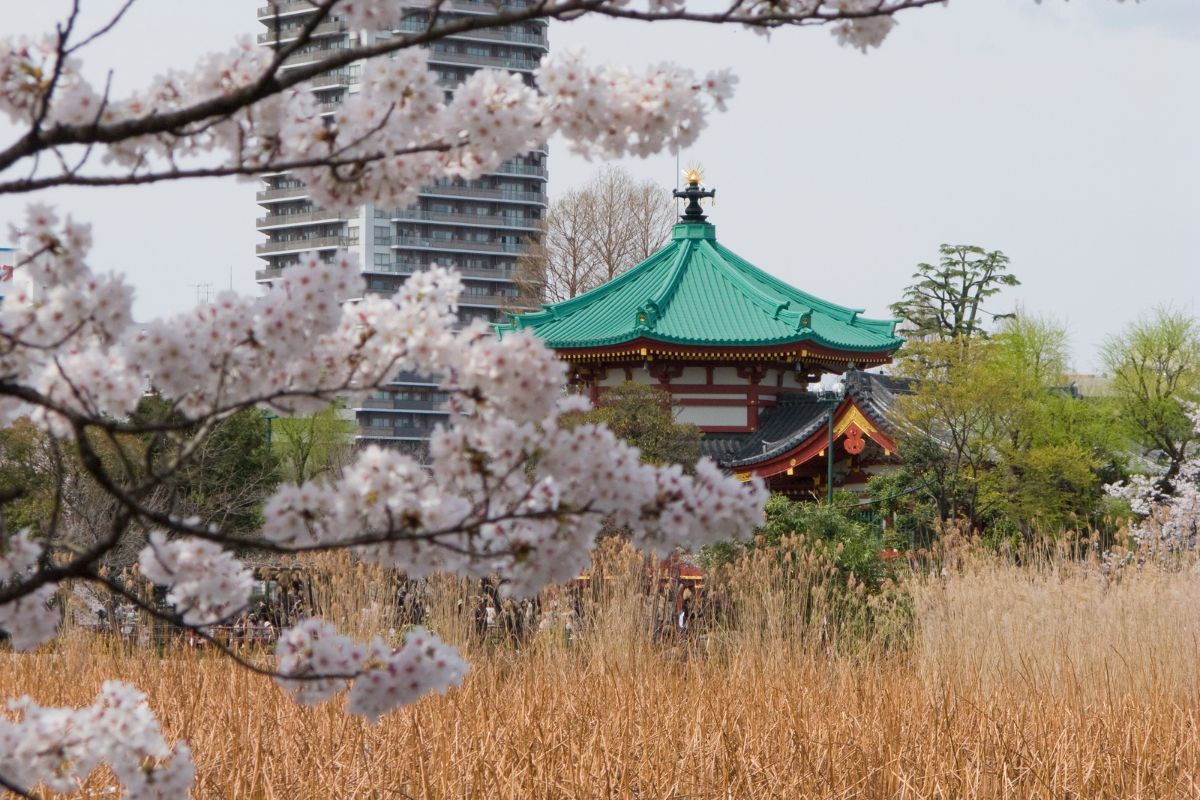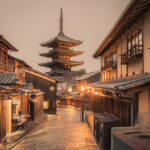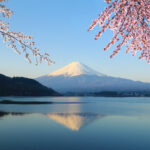Japan is full of fascinating historical locations. Some date back to 745 BC or earlier!
In such a beautiful country, you can’t deny that it also has a rich history and is simply fascinating to most visitors.

If you’re planning on heading over to Japan and want to make the most of your trip, there are some incredible sites you should definitely explore.
The six sites listed in this article are all breathtaking, and offer great opportunities to better understand Japan’s history and culture.
Let’s take a look, so you can start planning your next trip!
Oldest Places In Japan That You Can Still Visit
1. Kamegaoka Site
Thought to have been built between 1,000-300 BC, Kamegaoka Site is a distinctive location to visit in Japan (see also ‘List Of Westerners Who Visited Japan Before 1868‘).
This site is located in the Aomori Prefecture on the Tsugaru Peninsula inside Tsugaru City itself.
Here, the massive burial area has numerous pit graves scattered across it. Many have burial goods, gems, pots, and a variety of other votive offerings.
Researchers suggest that the site was used for ancestor worship, as it was constructed over a long period of time.
Kamegaoka Site is a popular tourist destination, and even has tours and guides to help you get the best experience.
To visit the area and get a Japanese tour, reservations are not required, and you can visit anytime between 10 am and 3pm on national holidays and weekends.
For English-speakers in groups of 10 or more, reservations must be made a week in advance.
Visiting is closed in the winter. However, in visiting times there are shops, coin lockers, cafés, and much more to enjoy in the area.
2. Tomb Of Emperor Nintoku
Found in Sakai in Osaka, the Tomb of Emperor Nintoku is a stunning sight to behold. This site is not only huge, but also distinctive with its keyhole design.
The burial mound is the largest tomb in Japan, and is thought to house Emperor Nintoku, a mysterious emperor.
While no one knows for sure who is buried here, the site is thought to date back to the fifth century.
Only in 2019 was the site designated a UNESCO World Heritage Site. Now, visitors can visit the site, though the inner grounds and tomb are often closed.
To get a good view of the site, visitors can get to the 21st floor of the observatory.
3. Todai-ji
Constructed under Emperor Shōmu between 245-752, Todai-ji is one of the main buildings within the temple complex.
At this time, Japan was going through a number of disasters. This included a smallpox outbreak, crop failures, and even an alleged coup.
The Emperor deemed these events to be due to a lack of piety, and he decided to unite the clans of Japan.
He put forward a law in 743 BC that stated that citizens were to have direct involvement in the building of the temples.
This led to more than two million people contributing to Todai-ji’s construction through labor and food.
The building’s original hall was forty-eight meters high and an incredible eighty-eight meters long. Inside, a bronze statue of the universal Buddha, Vairocana, sat.
Over the years, fires were responsible for partially destroying the hall, and it was hastily rebuilt.
Now, this stunning site can be visited between 8am and 5pm, with various tours available for locals and tourists.
4. Meiji Jingu
Located in central Tokyo, this beautiful shrine was built to honor modern Japan’s first emperor and his wife.
Although this is one of the more recent pieces of architecture on this list, some parts of the site are almost 2,000 years old.
Meiji Jingu was constructed after 1914 after the death of the emperor’s wife. Several parts of the building were destroyed during the Second World War, but rebuilt in the 50s.
This site is made up of three distinct sections – a series of shrines, the inner and outer gardens, and the Meiji Memorial Picture Gallery.
Visitors enter the site through 1,700-year-old gates. These gates are some of the largest in Japan, and bear the emperor’s imperial seal.
While usually quiet, large crows visit the site during the Autumn Grand and Hatsu-mode festivals are celebrated.
That’s in late October and early January.
Once there, you can purchase charms and bring offerings to the shrine.
Visitors should purify themselves by pouring water over their hands before reaching the final gate. You can visit any time throughout the year for free.
5. Sannai-Maruyama
Sannai-Maruyama is one of the oldest sites you can visit in Japan.
Thought to have been built around 2,600 BC, you can find this historical site in the Aomori Prefecture in Northern Japan.
Here, the ruins of a large settlement from the Jōmon period sits.
One of the most notable features here is the six-pillared building. This building is thought to be the oldest, and an impressive sight.
Sannai-Maruyama was accidentally discovered in 1992. The prefecture started surveying the grounds for a location for a baseball stadium when the ancient ruins were found.
Now, the site can be explored by tourists and locals for a price.
6. Osaka Castle
Osaka Castle can be found in Chūō-ku, Osaka. As one of Japan’s most famous landmarks, this castle is an incredibly popular tourist site.
Construction started in 1583 on the site of Ishiyama Honganji Temple, which was destroyed only 13 years before.
At the time, Osaka Castle was the largest in Japan!
Over the years, the castle has been destroyed and rebuilt numerous times.
The first time the castle was destroyed was due to an enemy attack, but it then got struck by lightning in 1665.
Only in 1991 was the current reconstruction done. It survived numerous air raids during the Second World War, but was repaired and quickly became a popular tourist destination.
Here, the castle itself still stands tall at five stories high. Inside, a museum full of historical artifacts sit for visitors to view.
If you’re lucky enough, you can secure a tranquil boat ride along the moat, and gaze at the cherry trees.
Honorable Mentions
There are lots of incredible sites to visit in Japan. If you’re for a few more interesting locations to visit on your travels, consider the following:
- Izumo Taisha
- Sensoji Temple
- Yoshinogari
- Kiyomizudera
- The Nagasaki Peace Park
- Tokyo National Museum
- The Edo Tokyo Museum
- The Hiroshima Peace Memorial
- Yasukuni Shrine
Final Thoughts
Japan is more than just a beautiful country. It has history that is worth exploring, understanding, and appreciating.
Some of the oldest sites in the country look like they could be brand new – as is the case with many temples and shrines in Japan.
In many cases, these sites have been rebuilt and restored after tragedies.
If you are planning a visit to Japan and want to immerse yourself into its culture and history, you should visit as many of these locations as possible.
Not only does each one have something unique to offer, but each has its own feel and history. These are sites that will bring you closer to the culture of Japan.
- 16 Best Websites To Watch Japanese Movies With English Subtitles - May 11, 2023
- Is ZIPAIR The Best Airline For Traveling To Japan? - May 11, 2023
- Ryu Murakami Vs Haruki Murakami – Which One Should You Read? - May 11, 2023








